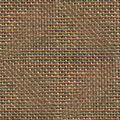Damask
From Wikipedia, the free encyclopedia
| This article does not cite any references or sources. Please help improve this article by adding citations to reliable sources (ideally, using inline citations). Unsourced material may be challenged and removed. (March 2009) |
Damask (Arabic: دمسق) is a figured fabric of silk, wool, linen, cotton, or synthetic fibers, with a pattern formed by weaving. Made with one warp and one weft in which, generally, warp-satin and weft sateen weaves interchange. Twill or other binding weaves may sometimes be introduced[citation needed]. The term originally referred to ornamental silk fabrics, which were elaborately woven in colours, sometimes with the addition of gold and other metallic threads. Damask weaves are commonly produced today in silk, linen or linen-type fabrics which feature woven patterns featuring flowers, fruit, forms of animal life, and other types of ornament.
Damask was first produced in China, India, Persia, and Syria, then the Byzantine Empire followed. In the West, it was first known as diaspron or diaper, the term used in Constantinople. In the 12th century however, the city of Damascus, famous for its textiles, so far outstripped all other places for beauty of design that it gave the cloth its modern name.
Damask weaves in linen, cotton, synthetic or blended fibers are currently most commonly found in table linens. Damask cloths for table or bedding purposes are most commonly made of flax or tow yarns, but sometimes made partly of cotton or synthetic fibers. The finer damask textiles for these purposes are made of the best linen yarn, and although the latter is of a brownish, ecru color during the weaving processes, the ultimate fabric is pure white. The highlights in these cloths are obtained by long floats of warp and weft, and as these are set at right angles, they reflect the light differently according to the angle of the rays of light; the effect changes also with the position of the observer. Subdued effects are produced by shorter floats of yarn, and sometimes by special weaves. Any subject, however intricate, can be copied by this method of weaving, provided that expense is no object. The finest results are obtained when the so-called double damask weaves are used
| Wikimedia Commons has media related to: Damask |




